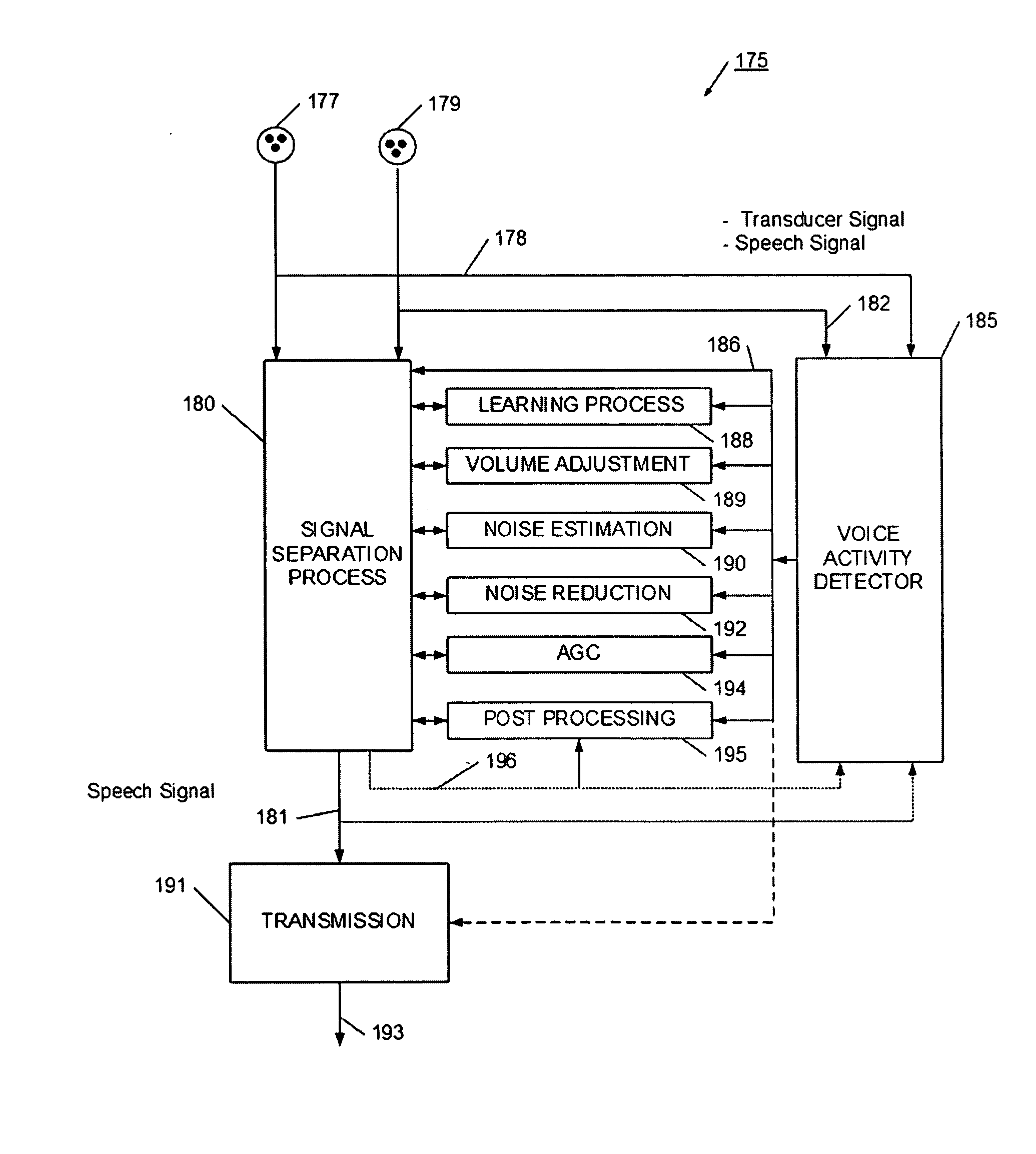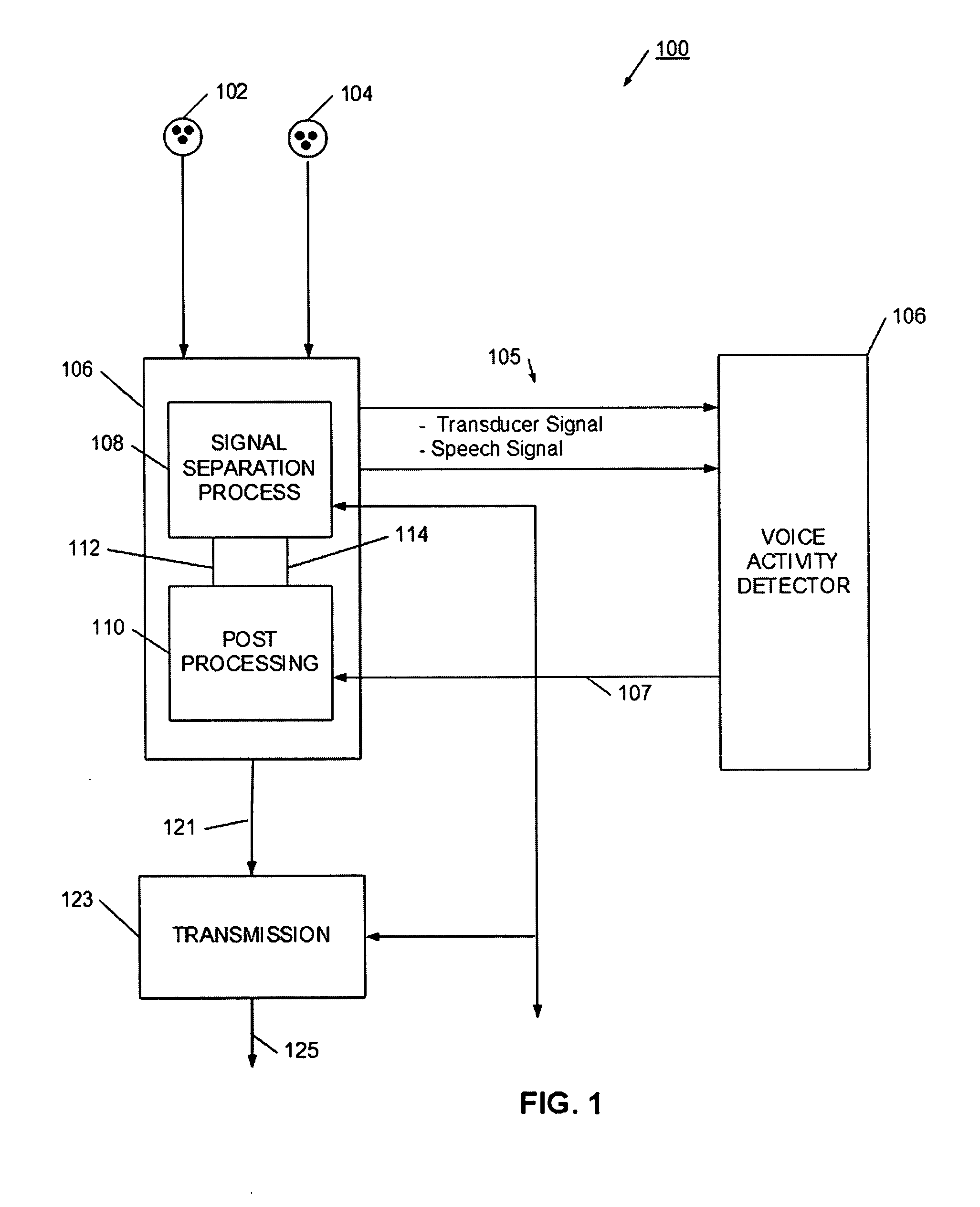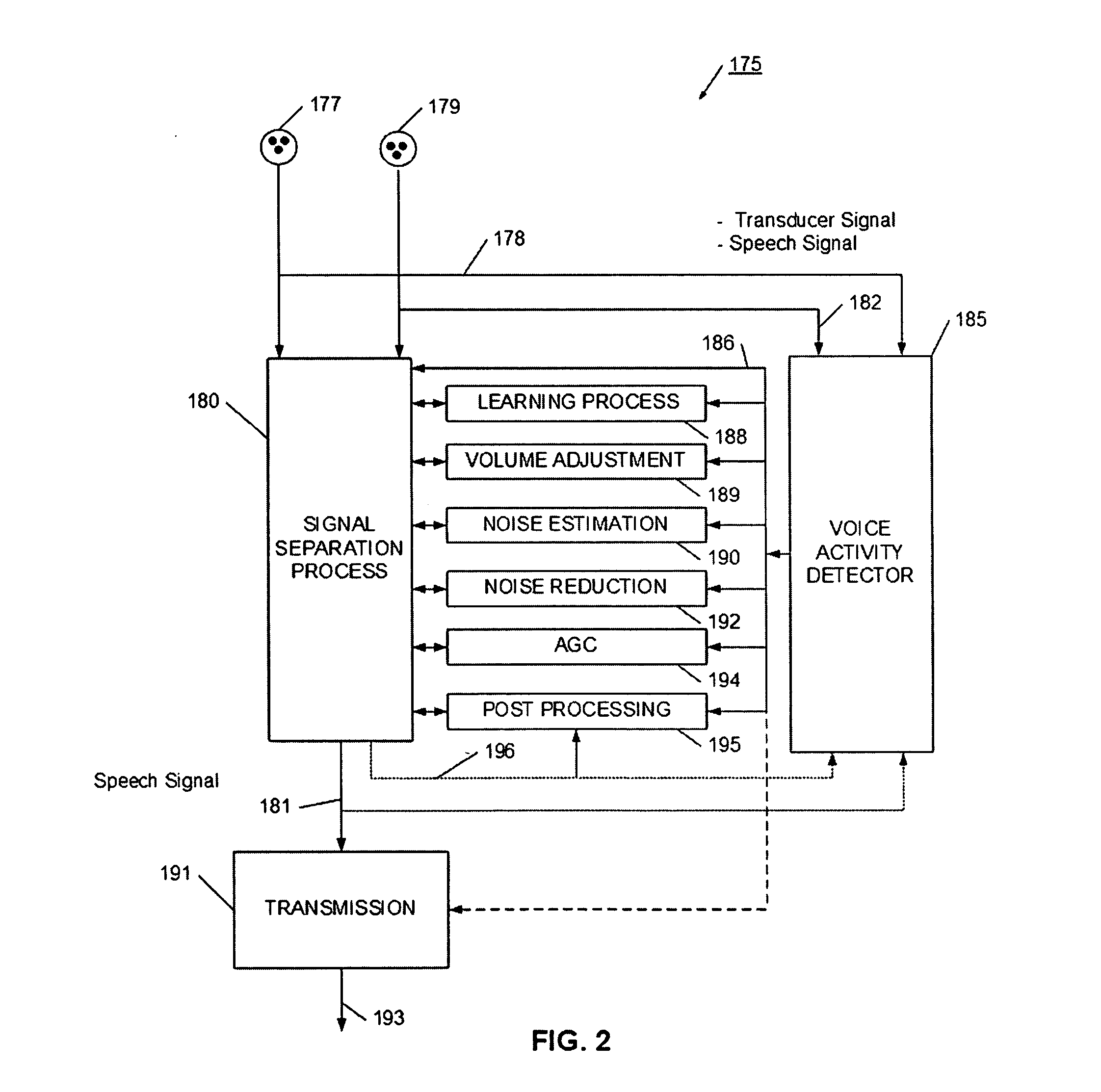Robust separation of speech signals in a noisy environment
a noisy environment and speech signal technology, applied in the field of speech signal separation, can solve the problems of difficult to reliably detect and react to a desired informational signal, electronic signal may have a substantial noise component, unsatisfactory communication experience, etc., to improve the quality of the resulting speech signal, and improve the quality of the speech signal.
- Summary
- Abstract
- Description
- Claims
- Application Information
AI Technical Summary
Benefits of technology
Problems solved by technology
Method used
Image
Examples
Embodiment Construction
[0039] Referring now to FIG. 1, a speech separation process 100 is illustrate. Speech separation process 100 has a set of signal inputs (e.g., sound signals from microphones) 102 and 104 that have a predefined relationship with an expected speaker. For example, signal input 102 may be from a microphone arranged to be closest to the speaker's mouth, while signal input 104 may be from a microphone spaced farther away from the speaker's mouth. By predefining the relative relationship with the intended speaker, the separation, post processing, and voice activity detection processes may be more efficiently operated. The speech separation process 106 generally has two separate but interrelated processes. The separation process 106 has a signal separation process 108, which may be, for example, a blind signal source (BSS) or independent component analysis (ICA) process. In operation, the microphones generate a pair of input signals to the signal separation process 108, and the signal separ...
PUM
 Login to View More
Login to View More Abstract
Description
Claims
Application Information
 Login to View More
Login to View More - R&D
- Intellectual Property
- Life Sciences
- Materials
- Tech Scout
- Unparalleled Data Quality
- Higher Quality Content
- 60% Fewer Hallucinations
Browse by: Latest US Patents, China's latest patents, Technical Efficacy Thesaurus, Application Domain, Technology Topic, Popular Technical Reports.
© 2025 PatSnap. All rights reserved.Legal|Privacy policy|Modern Slavery Act Transparency Statement|Sitemap|About US| Contact US: help@patsnap.com



